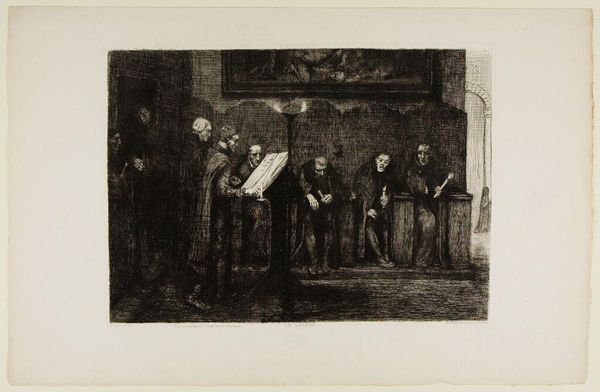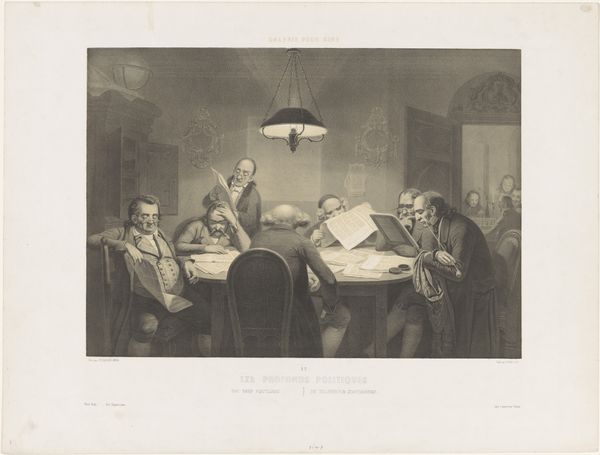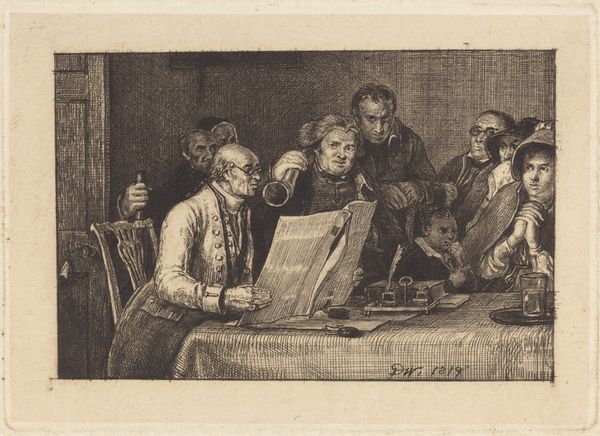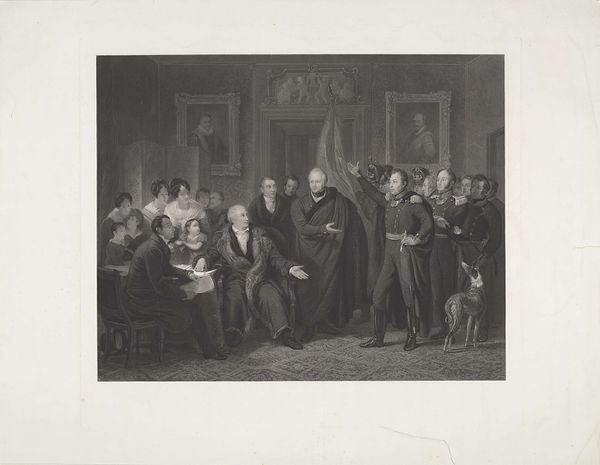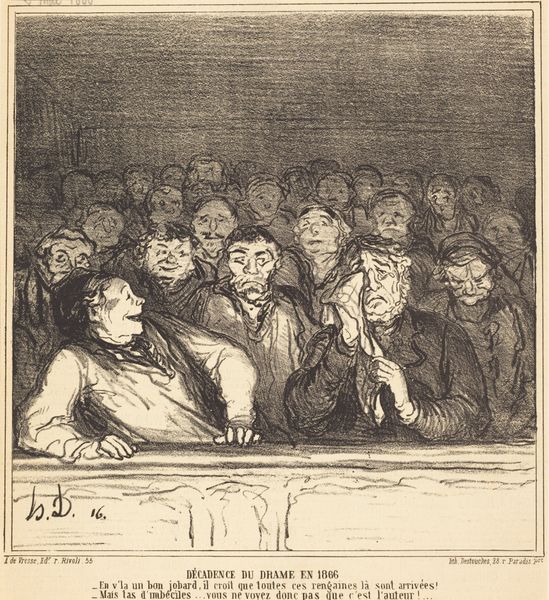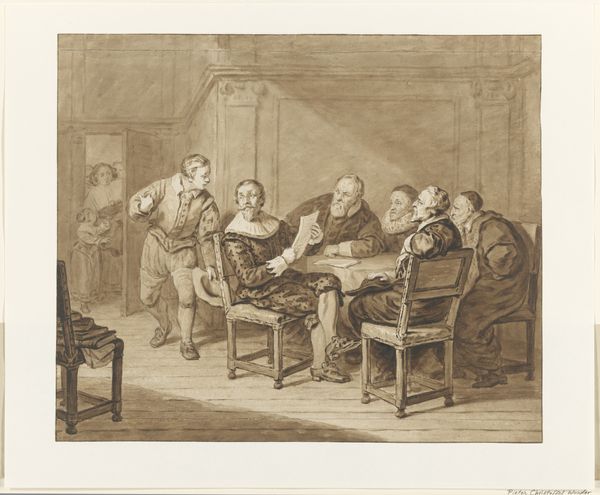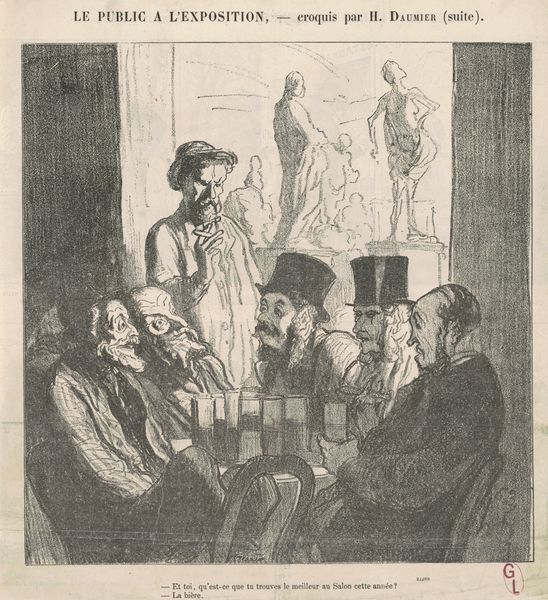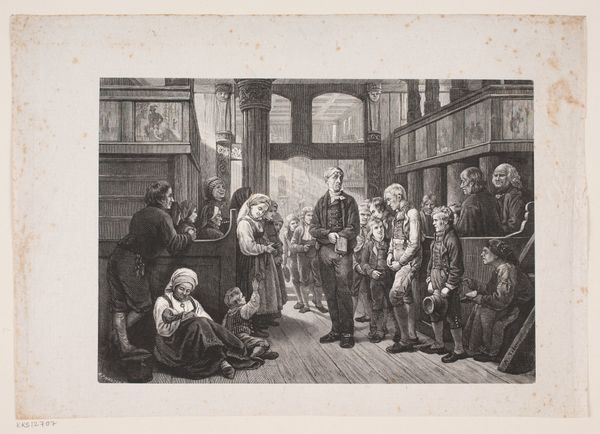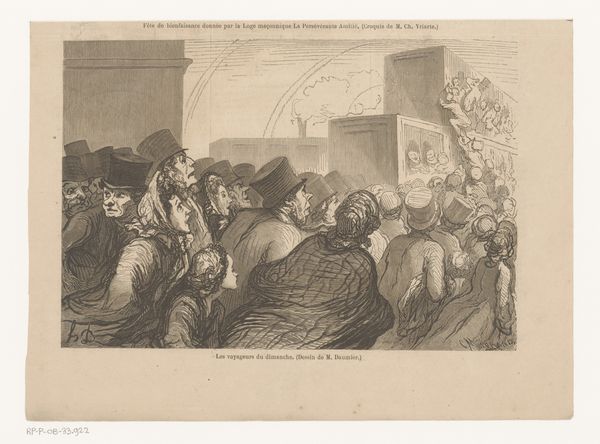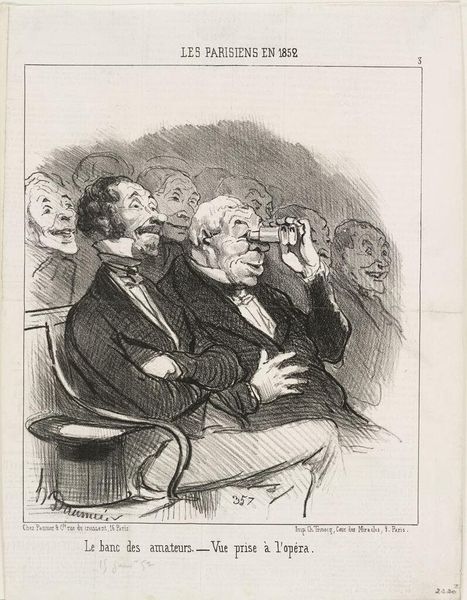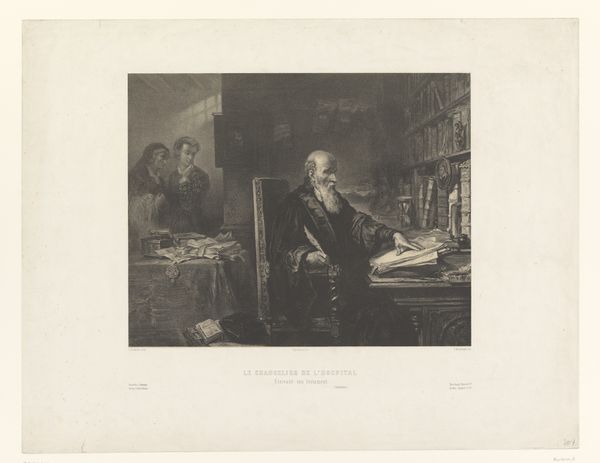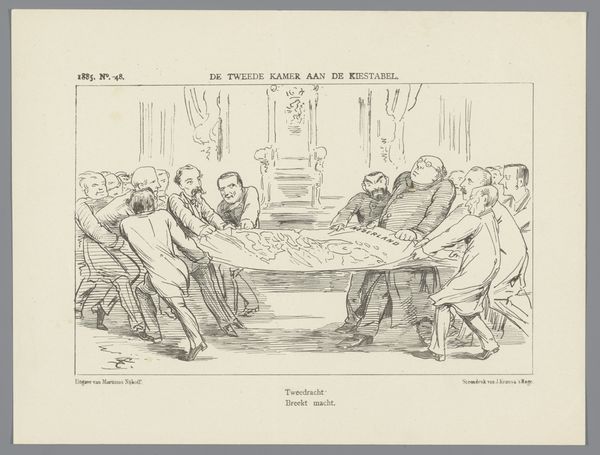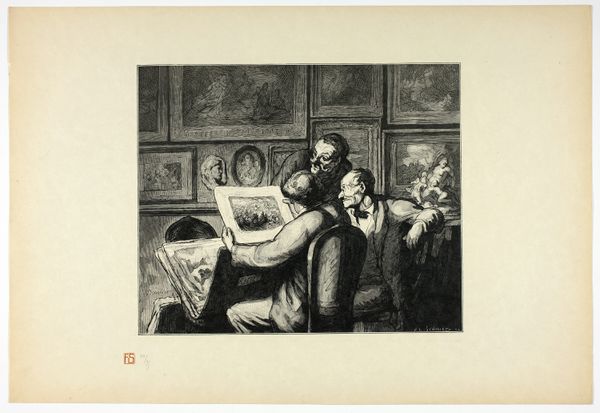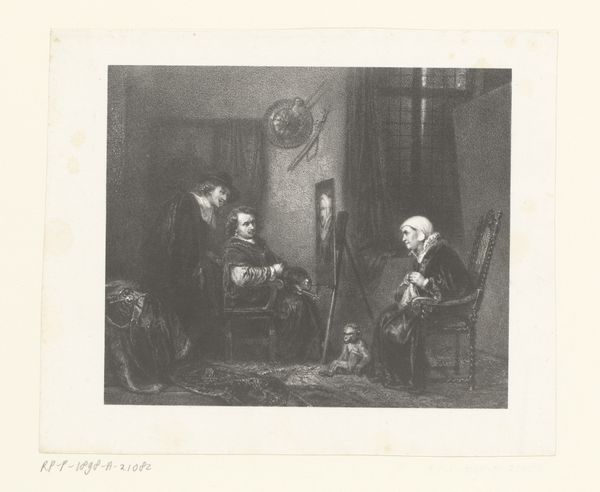
Fauteuils d'orchestre, from Tirage Unique de Trente-Six Bois Possibly 1878 - 1920
0:00
0:00
Dimensions: 218 × 262 mm (image); 324 × 470 mm (sheet)
Copyright: Public Domain
Editor: Auguste-Louis Lepère’s "Fauteuils d'orchestre," a print made somewhere between 1878 and 1920, captures a scene of theatre patrons. There's a satirical quality to it; it feels like a commentary on the bourgeoisie and their engagement with art. What symbols or deeper meanings do you find in this work? Curator: It’s fascinating how Lepère uses caricature to explore social dynamics. Consider the motif of the crowd. Each face is distinct, almost grotesque, yet they blend into a unified mass. Do you think this symbolizes the loss of individuality within a social class, their collective identity shaping their perceptions? Editor: I think it could certainly suggest that. They are almost like types, exaggerations of characteristics you might find in the upper classes. And the frieze along the top – is that part of the theatre, or another commentary? Curator: Ah, the frieze! It hints at something primal, perhaps Dionysian revelry. Placing it above the audience creates a potent contrast between cultured facade and underlying urges, hinting at suppressed desires. Don't you find that dichotomy really striking? Editor: Yes, it introduces an interesting layer of tension. There is the formal, composed audience and above them this bacchanal scene playing out. So the decor, rather than simply being ornamentation, amplifies the print's social critique? Curator: Precisely. Think of cultural memory encoded in theatrical spaces: ritual, spectacle, judgment. Lepère's orchestration makes us question not just what they are watching onstage but also their roles as spectators within a larger cultural performance. It subtly investigates who we are when we think we're just "watching". Editor: I never thought about the theatrical space itself as being laden with meaning like that! That reframing is truly eye-opening; I now have a much deeper understanding. Curator: Indeed! Every detail holds a symbolic weight that reflects societal anxieties and pretensions that speak to our continuing existence today.
Comments
No comments
Be the first to comment and join the conversation on the ultimate creative platform.
